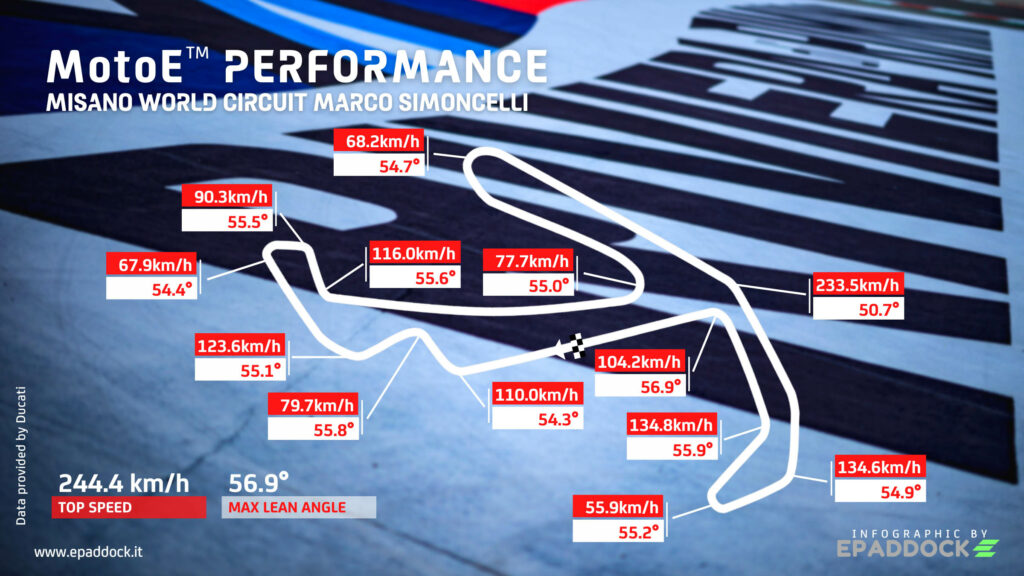The performance of the MotoE on the Misano circuit
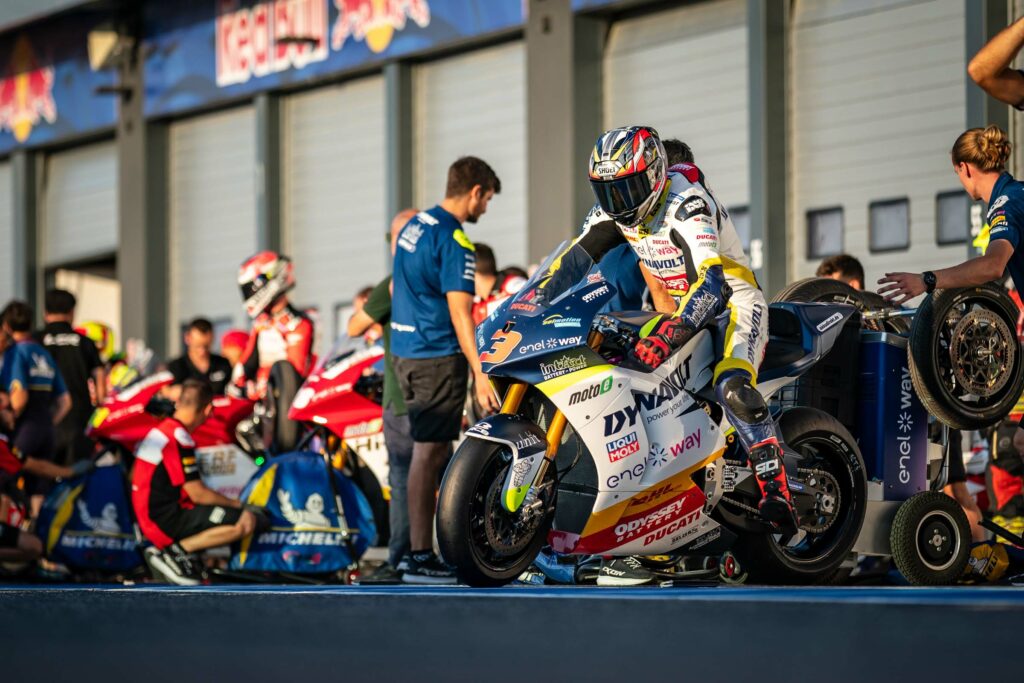
The performance of the MotoE on the Misano circuit
The Misano circuit is spread over a length of 4226m with ten curves to the right, six to the left and a final straight of 510 meters. There MotoE took to this track for the first time in September 2019. Thanks to the telemetry shared by Ducati, we can show you the performance of the MotoE on this route. On this page you can also find infographics of the track with speed and lean angle curve after curve.
The average lap record speed for the class MotoE in Misano it is 151.2km/h while the maximum speed reached by MotoE it was 244.4 km/h. On the Italian circuit, the electric class of MotoGP was with the throttle wide open 46.8% of the time while the engine braking was used 31.1% of the time. As for the brakes, the front is used 25.7% of the time. Regenerative braking of MotoE allow 10% of the energy used in Misano to be recovered.
Some of the following images were created using the graphic engine of the MotoGP23 developed by Milestone which also includes the World Cup MotoE.
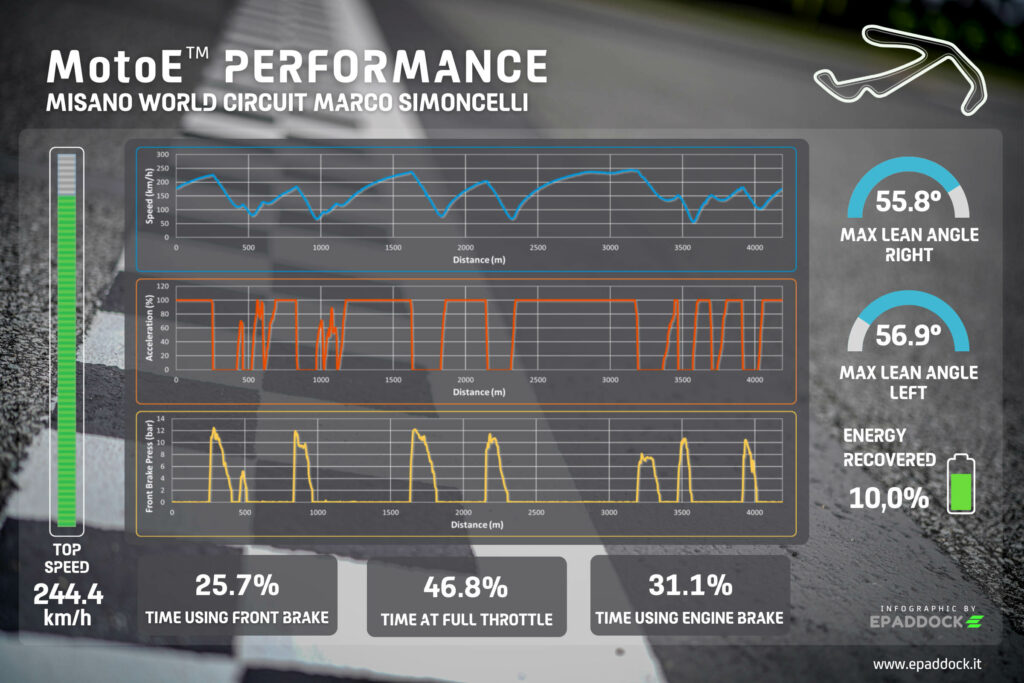
The description of the Misano circuit
Misano is a beautiful and extremely technical circuit. Turn one is critical at the start when, after the green light, there is a risk of contact between the drivers. There are two lines available, one wider and one narrower and this leads to the risk of crossing when changing direction towards turn two. During the race, turn one does not require excessive braking, you enter quite hard while maintaining a good speed to get to turn two. This corner is tighter but it is important to slide the bike to have enough speed to tackle turn three and get to turn four (Rio turn). In turn three you have to be very careful because it is easy to put your wheels in the green zone and get penalized.
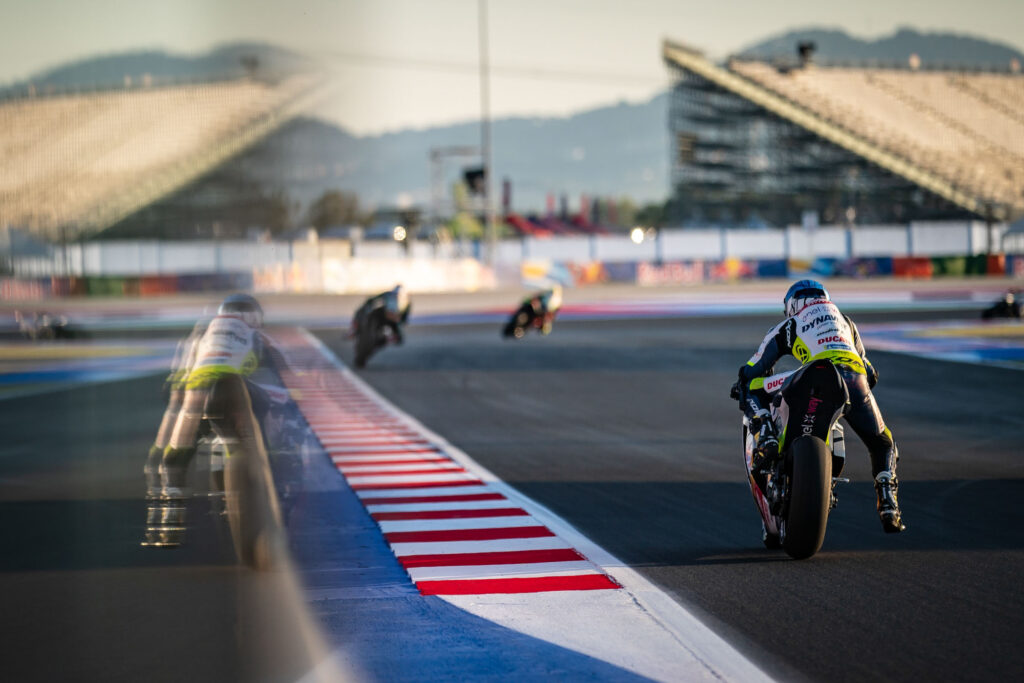
Turn four is one of the slowest on the circuit and you need to have a stable bike when braking. It's a corner that closes and in qualifying you try to connect the trajectory with the next one while in the race it's a point where you can try to overtake. When exiting five you need to stay tight on the right side of the track to prepare for the quick change of direction to enter six. This curve is very fast and you have to enter it precisely; making a mistake in preparing this curve means going wide at the exit and risking going to the green with a consequent penalty. After a short straight you arrive at the Quercia curve which represents an overtaking point for all categories. Here you can make two trajectories: to overtake you can enter narrowly and then widen or, which is the most effective trajectory, keep a slightly wide line at the entrance, go to the rope and then exploit the acceleration at the exit up to the curve of the Sunset.
This is a very particular point on the Misano circuit that can be interpreted in various ways, it is a wide curve where you brake leaning and you can try to overtake. However, the important thing at this point is to have a lot of grip at the exit and open the accelerator as soon as possible because you are entering the fastest section of the Misano circuit. This is a long straight in which the famous "Curvone" is inserted, an extremely fast curve that with the MotoE it is difficult to do fully; you need a lot of feeling with the bike and it's easy to lose grip on the rear when you go downhill or go wide and end up in the green zone beyond the curb. After the "Curvone" you enter a stretch of sequential curves (twelve and thirteen) that lead up to the Carro curve (fourteen). Twelve does not involve any great difficulty while thirteen is reached quickly and it is difficult to find the right apex point. This corner is important to prepare well for turn fourteen which is a critical overtaking point, especially on the last lap because from there until the finish line it is difficult to overtake.
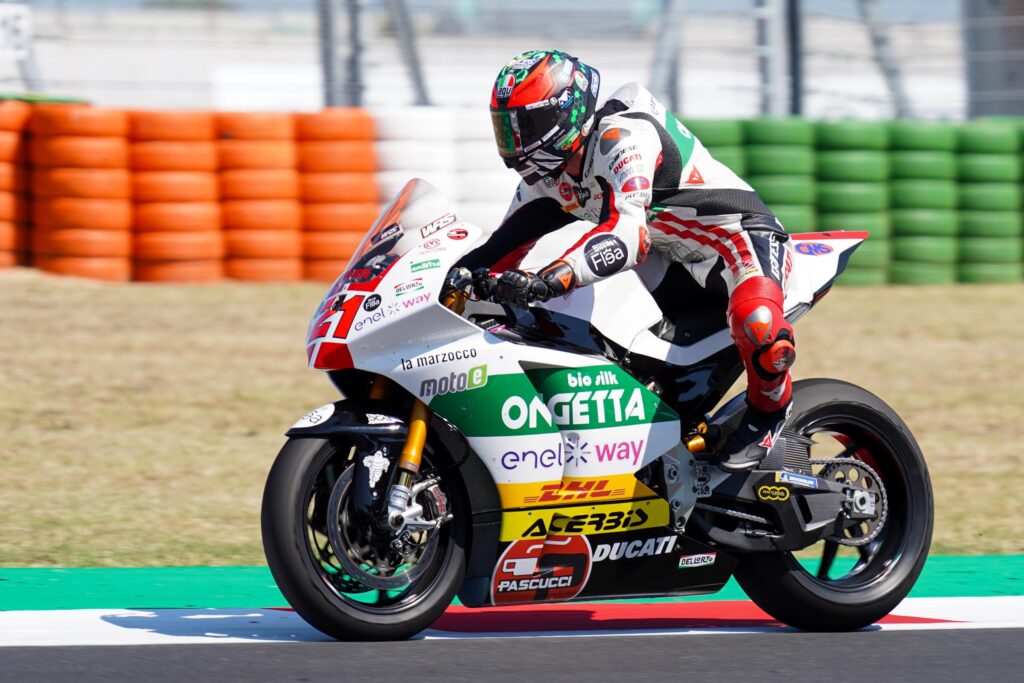
Turn fourteen is a corner where it is difficult to find the right compromise between braking and cornering to maintain a good exit speed to tackle the last two corners. The first of these two does not present particular difficulties while in the last one the bike breaks down easily when braking because you arrive at a non-optimal line from the previous corner and you need to correct it while braking. Once you enter the last corner you need to slide the bike well to get out quickly towards the finish line but you have to be careful not to touch the green on the way out. Making an overtake at this point is extremely difficult because, by choosing an inside line, you then don't exit with sufficient speed onto the pit straight.
The choice of set-up for this circuit is not easy: you can go for an extremely stable bike to gain in the braking points (Rio, Quercia, Tramonto and Carro) or have a stable bike in fast speed, especially in the Curvone where if you close you waste a lot of time with gas.
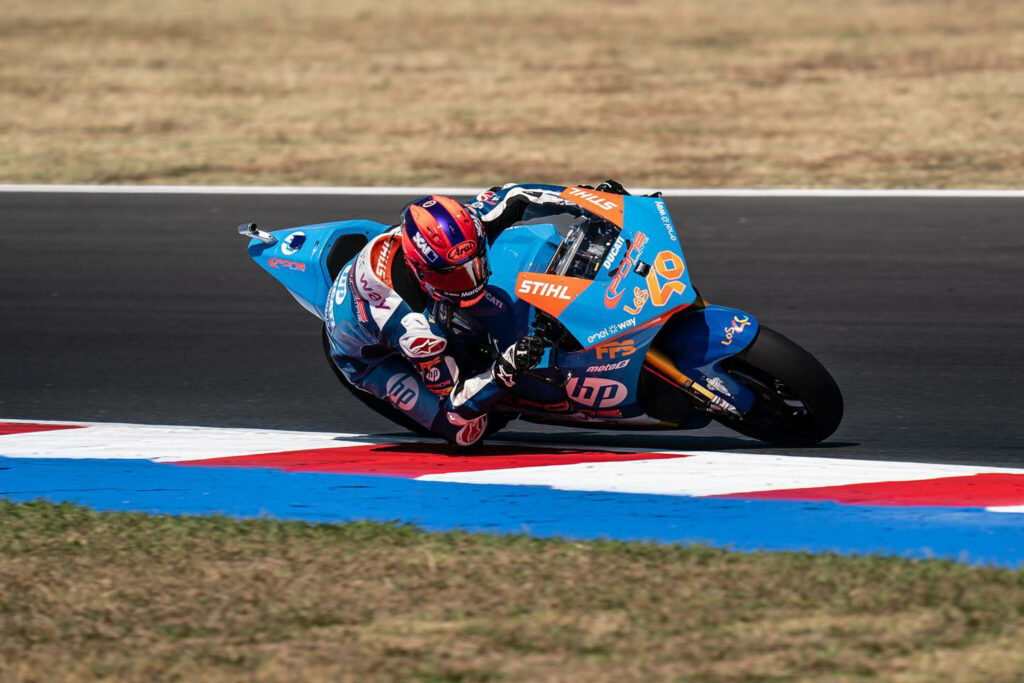
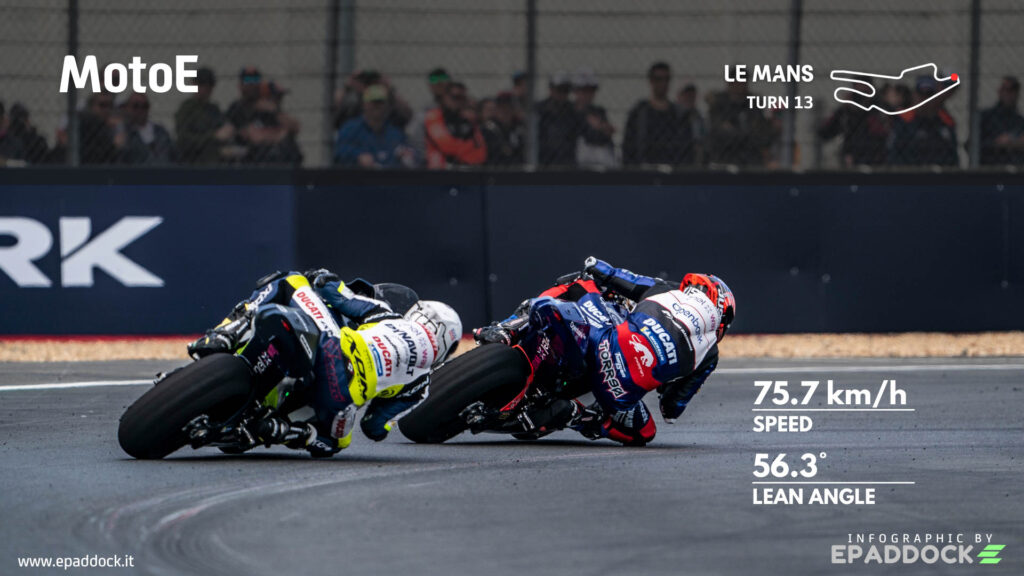
Numbers and Data
Numbers, data and performance of MotoE
Here you will find the link to the official website of the Misano International Circuit: www.misanocircuit.com
To be updated on the MotoE World Championship, subscribe to the Epaddock Whatsapp channel and receive all our news for free on your mobile phone in real time: find out how here.



